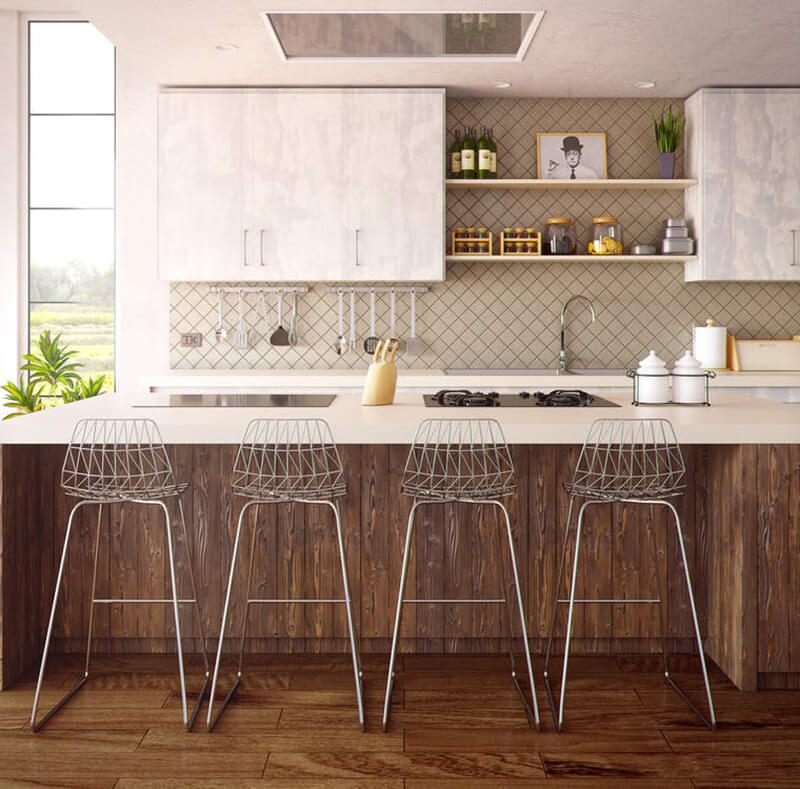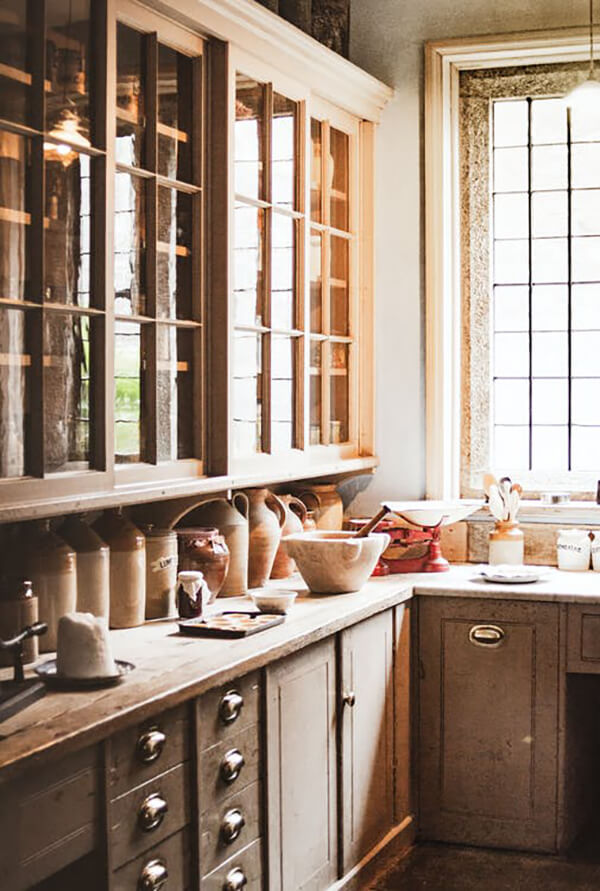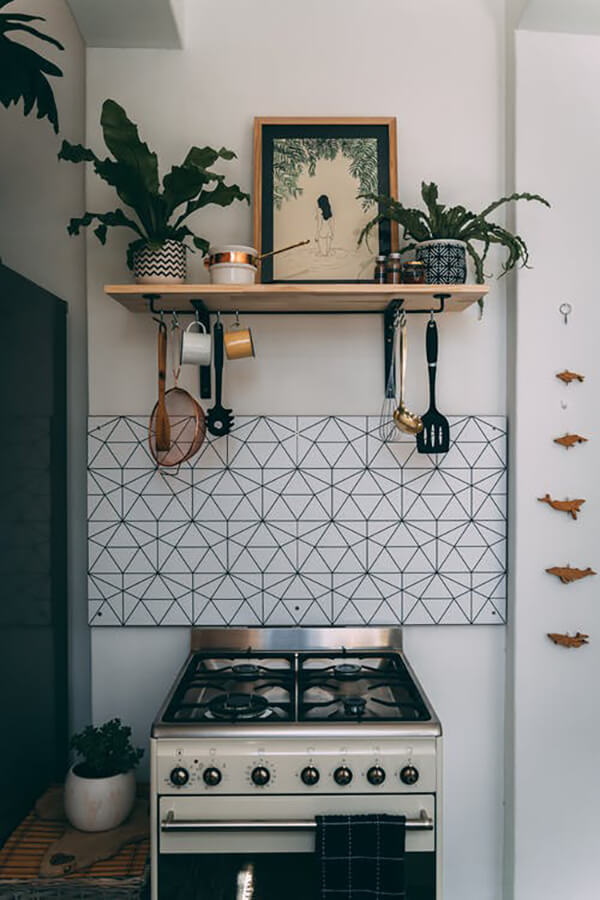Kitchen remodeling is a crucial home improvement consideration
Did you know that Kitchen remodeling ranks as the number one most popular renovation space in the USA and Canada? So when you decide to renovate your home, and you’re not quite sure where to begin – the kitchen is it. It will create an enhanced lifestyle and uplift the asset value simultaneously.
Kitchen renovations can range from around $50,000 to over a hundred thousand, depending on your vision, location, and complexity. Indeed, numerous enticing options embrace space-age metals, exotic marbles, startlingly beautiful synthetic materials, sleek cabinetry, and appliances from built-in coffee makers to sub-zero refrigerators. And that’s only half of it.
The architecture of the space enters the equation in a significant way. For example, do you knock down walls, shift things around, steal footage from an adjacent area? Or are you okay with the structure as is? These decisions are vital because they inevitably impact electricals, plumbing, and lifestyle disruption.
This article aims at helping you navigate this project seamlessly, with minimum hassle and maximum final satisfaction.
What are the primary kitchen remodeling considerations?
The best way of tackling any renovation, most notably the kitchen, is to focus on three things:
- Your budget
- Making sure you don’t over-capitalize
- Getting a specialist kitchen remodeler into your corner
The above three factors integrate because one influences the others, and vice versa. For example, contracting the wrong construction partner can quickly jettison the budget you had in mind and create a showpiece that may look amazing but is overpriced for the neighborhood. So, it’s a balancing act, and choosing a skilled kitchen remodeler near you to partner with your family in this venture can make all the difference.
The right kitchen remodeling contractor for you
We want to start with this because it can pave the way for everything else. Renovation professionals should be licensed and insured as a minimum qualification. Unfortunately, that’s not nearly enough. There’s no substitute for doing your due diligence, and the best place to begin is by scanning reviews of the company’s past clients. When you hire someone for a project reflecting many options, it’s imperative to ensure that experience and undoubted competence are in the mix.
- First, access entities near your community. You want to work with experts who know your demographics’ ins and outs and have connections to suppliers that can deliver materials quickly.
- The best way is to identify a marketplace that has secured the membership of:
- Remodelers
- Roofers
- Window installers
- HVAC contractors
- In other words, home improvement platforms across a broad spectrum that deliver recommended specialists.
- Companies like Home Advisors, Angie, and Directorii are reputable in this arena.
- The mentioned ones above back up their referrals with monetary guarantees and underline that they’ve already completed the heavy lifting due diligence.
- It should save you substantial frustration and aggravation.
Here’s the checklist for your shortlist
The quotes should come rolling once you press the start button. Then, you have to select the one to take you on the remodeling journey. Here are some pointers to assist in settling on your ideal renovation partner:
- You must get a sense that they try to save you money, not push you to spend more.
- At the same time, if the contractors believe your budget is too low, hear them out. Determine whether or not their points are valid or just trying to squeeze more out of a job.
- A negative signal is when the initial suggestions surround complicated space configurations. Severe architectural adjustments are frequently unnecessary and can cost thousands before you even begin on the upgrades and aesthetics. Let alone that it will disrupt your routine with dust and debris for perhaps weeks.
- We find that prudent remodelers begin by making the best of what they have. It may mean accepting a little less than perfection, but that can get lost in the added features if they’re compelling enough.
- Discuss the remodeler’s supplier contacts. Many of them have preferential buying status that can work to your benefit. Moreover, ascertain they will not restrict you in selecting brands and materials.
- Spend substantial time on lighting. Kitchens, of all places, need to look bright when you want it that way or mood-centric at the appropriate moments. When remodeling, emphasize the placement of concealed lights and contemporary light fittings suitable for the space. Pay attention to how your referees respond to that and the ideas they put forward.
- After a kitchen remodel, there’s nothing more devastating to a homeowner than discovering that odors linger after a heavy cooking session. After all, aside from the room functioning as a social center for friends and family, food preparation is the main show. Bring ventilation into the conversation early on because it’s one of the most vital functional aspects of the project.
- Once the build-out is in motion, things will come streaming into your home – tiles for the floor, cabinets, slabs, faucets, and appliances (only some examples):
- Who’s taking an inventory to ensure what’s delivered matches the quantities and specs?
- Secondly, address the same going into safe storage and remaining secure from theft.
- Talk about schedules and time horizons, and ask what happens if completion extends from the original deadline. Professionals in the renovation arena have these issues covered and all those mentioned above.
The important thing about interviewing recommended contractors is letting them know you’re not a pushover or ill-informed. Any building project is a two-way thing, balancing the views of the client and the artisan without unnecessary conflict to arrive at mutually acceptable solutions.
All the good stuff
The steps outlined above shouldn’t detract from your vision of a modern kitchen with all the latest innovations on the market. Of course, budget plays into this, but once agreed, request an overview of the fixtures, appliances, and materials that qualify. There’s no point in wasting time visiting supplier showrooms if their inventory is too expensive.
Sometimes you have to stay with existing appliances or repaint cabinets instead of replacement. On the other hand, some fantastic synthetics upgrade the kitchen at a fraction of the price of imported exotics. Even the very wealthy are opting for the latter these days. Here are the main categories that come under the spotlight, offering alternatives across a broad spectrum:
Appliances and conveniences
- Microwaves
- Ovens
- Hoods
- Refrigerator/ Freezers
- Dishwashers
- Instant purified hot water
- Automatic garbage disposal
- Built-in coffee-makers and espresso machines
- Double sinks
- Multi-purpose faucets
- Toaster ovens
Materials
- For floors
- Hardwood (often not waterproof but great aesthetics and colors)
- Tile (also great aesthetics and colors but can be slippery when wet)
- Vinyl and laminate – an excellent mimic of hardwood; challenging to tell the difference in the upper price range.
- Cork – A definite aesthetic appeal, relatively inexpensive. Not as durable as other materials described.
- Concrete is trendy these days for that retro look. Also inexpensive, but it doesn’t suit all styles.
- Travertine and marbles – A classic look that never dates. A classic look that never dates. A genuinely luxurious feel but is an expensive option based on exotic imports from Italian material suppliers.
- For countertops and splashbacks:
- In massive demand for new and remodeled kitchens, Quartz doesn’t need sealing. Expensive.
- Granite – offered in thousands of natural colors and ingrained patterns, shiny or matte finishes. Generally more porous than Quartz but not significantly so. A wide price range, depending on how exotic you go.
- Marble – same comments as above for flooring. It has a timeless look, is softer than granite and Quartz, and is quite porous. It is susceptible to scratches and stains, but some people are happy to live with it as a trade-off for aesthetics.
- Porcelain is probably the fastest growing in popularity. The beautiful finishes and color variations are stunning, alongside unsurpassed durability. Affordability slots in at a much higher rating than the natural materials mentioned above.
- Wood (cherry, maple, hickory, walnut, teak, or mahogany) – A great looker that lends warmth to the room (versus the colder feel of granite). You must be ready to accept cuts and indentations on the surface if designed for cutting and chopping.
- Appliances:
- Slate – provides a low-gloss, matte finish for the sleekest appearance you can imagine. It’s also fingerprint-resistant, durable, and easy to clean.
- Stainless steel – prevalent, modern, integrates with any design. Easy to maintain and a sturdy material from every angle. Also available in black steel to give the room that extra edge.
- Miscellaneous – offering less expensive options in a range of colors and creating different moods (depending on the design of the remodel).
- Lighting
- Ambient lights merge with natural light to create a room ambiance, mostly recessed into the ceiling.
- Task lighting for brightness where you really need it and dispel shadows cast by the recessed installations.
- Under Cabinet and Accent Lighting brightens dark corners and adds to the room’s overall feel.
Conclusion
To reiterate, your remodeling partner should be by your side every step of the way in this journey. Experienced pros have seen it all and dealt with reputable supply sources. If you have an architect involved, they should fit in like a hand in a glove. Still, many renovators have enough architectural skills to cover all the bases as a one-stop solution. Start with a credible marketplace as the best avenue to get referrals that resonate with you in an arrangement embracing all the above.



